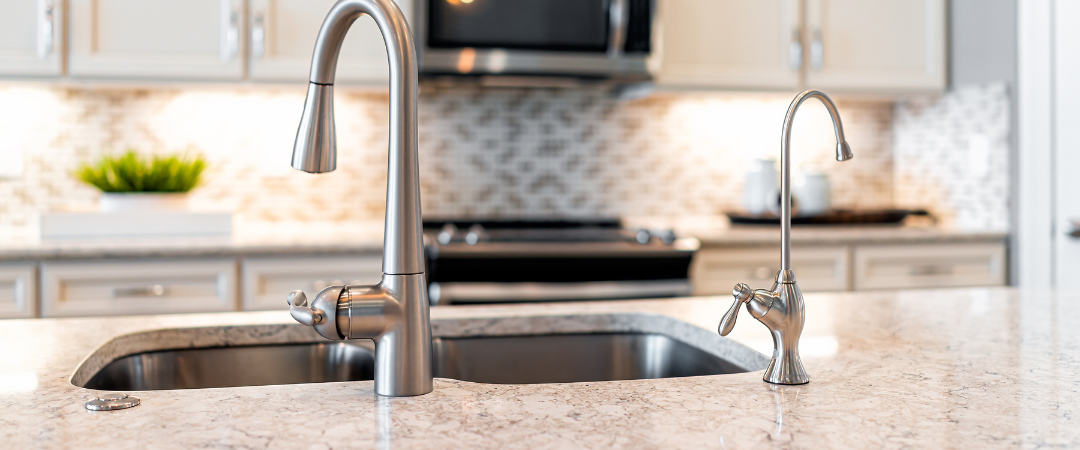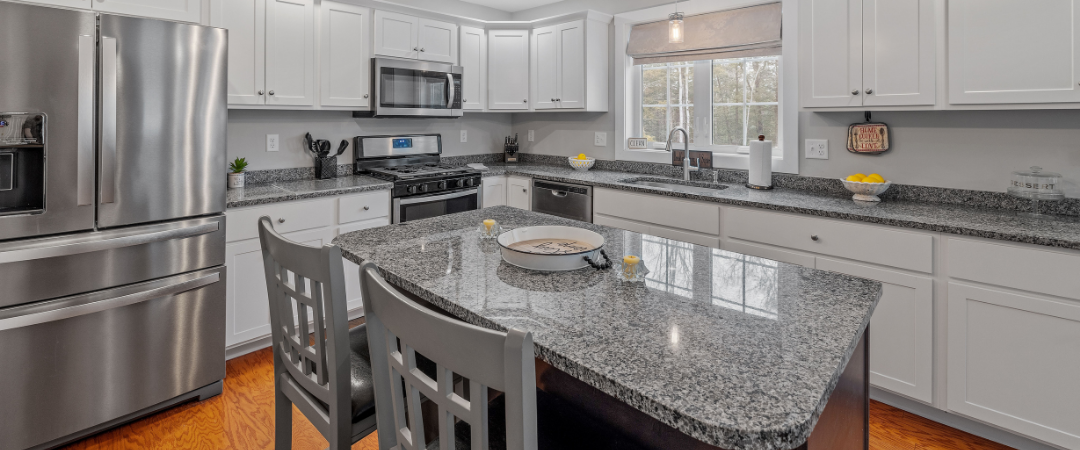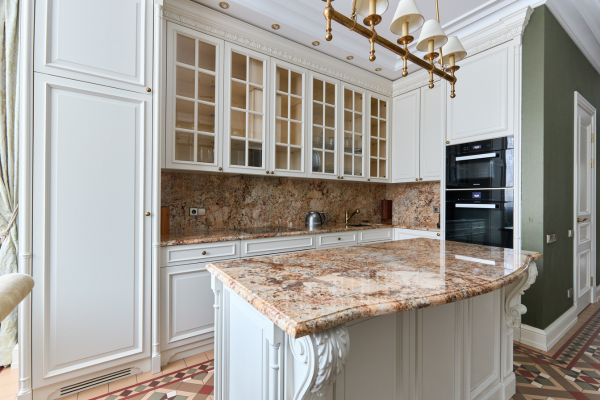Granite countertops are known for their durability, timeless beauty, and ability to withstand years of use. But like any surface in your home, they don’t last forever without proper care. Over time, even granite begins to show signs of wear and tear. The good news? Restoration can bring them back to life without the need for a full replacement. Let’s break down the most common signs your granite countertops need some attention—and what you can do to fix them.
Why Granite Countertops Need Restoration
Granite may be tough, but it’s not invincible. Everyday use, spills, cleaning habits, and even the natural aging of the stone all play a role in its condition. Restoration isn’t just about aesthetics—it’s about protecting your investment and extending the life of your countertops.
Signs It’s Time to Restore Your Granite Countertops
‣ Dull or Faded Appearance
If your once-shiny countertops look flat and lackluster, it’s a clear signal that the protective sealant has worn down. Granite should have a reflective sheen when properly maintained.
‣ Stains That Don’t Wipe Away
Granite is naturally porous. Without proper sealing, liquids like wine, coffee, or oil can seep in and leave behind stubborn stains. If scrubbing doesn’t remove them, restoration is needed.
‣ Scratches and Etching
Chopping directly on the surface or sliding heavy pots across the counter can leave scratches. Acidic foods like lemon juice can also cause etching, leaving dull patches that don’t match the surrounding stone.
‣ Cracks and Chips
Small chips may not seem like a big deal, but over time they can worsen. Cracks not only impact the appearance but can also trap bacteria—making your kitchen less sanitary.
‣ Water Rings and Cloudy Spots
Notice cloudy patches where water frequently pools? That’s a sign the sealant has broken down. Water penetration can weaken the stone over time.
‣ Uneven Surface
If the surface feels bumpy or rough, that means wear has occurred in high-traffic areas. Restoration smooths these inconsistencies for a polished, even finish.

How to Restore Granite Countertop Issues
‣ Re-Sealing the Stone
If dullness, water rings, or light stains are the problem, resealing is often the solution. Professional sealing penetrates the stone and adds a protective barrier against future damage.
‣ Polishing for Shine
For countertops that have lost their glossy finish, polishing restores the smooth, reflective look. Think of it like a spa treatment for your stone—it buffs away imperfections and reveals a fresh surface.
‣ Stain Removal Techniques
Deep stains require poultices (a paste applied to pull stains out of the stone). Professionals use specific mixes depending on whether the stain is from oil, wine, or something else.
‣ Repairing Chips and Cracks
Small chips can be filled with epoxy that’s tinted to match your granite. Larger cracks might need professional reinforcement, but they can often be made nearly invisible.
‣ Grinding and Honing
For severe scratches or uneven surfaces, restoration experts may grind down the top layer of granite and then hone it back to a smooth, uniform look.
‣ Full Professional Restoration
If multiple issues exist—dullness, cracks, and stains—it may be time for a full restoration service. This process typically includes grinding, polishing, sealing, and repairs, leaving your granite looking like new.
Prevention Tips to Keep Granite Looking Its Best
‣ Use Cutting Boards
Avoid chopping directly on granite—it protects both your knives and your counters.
‣ Clean Spills Immediately
The quicker you clean up wine, coffee, or oil, the less chance they’ll seep into the stone.
‣ Stick to pH-Balanced Cleaners
Harsh or acidic cleaners strip away the sealant. Stick to mild, granite-safe cleaning solutions.
‣ Re-Seal Regularly
Depending on usage, granite should be sealed once a year (or more often in high-traffic kitchens).

Conclusion
Granite countertops are an investment worth protecting. While they’re strong and beautiful, even the best surfaces eventually show signs of wear. Recognizing when it’s time for restoration—and taking action—can save you money, improve the look of your kitchen, and extend the life of your countertops for years to come.
Restorations FAQs
‣ How often should granite countertops be resealed?
Most granite countertops need resealing once a year, but high-use kitchens may require it more often.
‣ Can I restore granite myself, or should I hire a professional?
You can handle minor maintenance like resealing, but for polishing, chip repair, or grinding, it’s best to call a professional.
‣ Will restoration change the color of my granite?
No. Restoration enhances the stone’s natural color but doesn’t change it. If anything, it makes the colors appear richer.
‣ How long does professional granite restoration take?
Most jobs take one to two days, depending on the size of the kitchen and the extent of the damage.
‣ Is it cheaper to restore or replace granite countertops?
Restoration is almost always more cost-effective. Replacement is only necessary if the stone is severely damaged or if you want a new design altogether.

